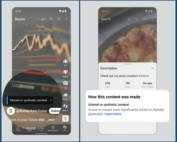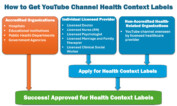Here are 5 tips that will help you succeed with office-based video filming as a way to grow your organization’s video library.
1. Focus on a few key types of videos.
As you build a video library, it’s good practice to choose just 1 or 2 types of video to start. With this, you can establish a solid foundation that you can build on later. Tried and true easy formats include:
A. Scripted informational or message videos using a teleprompter – Short videos using a teleprompter make it easy to have your CEO or other department leaders communicate a clear explanation of an event or program, or a message for your stakeholders. You can also add in photos, graphics, or other footage, as needed. Here are a couple of samples of this style of video.
Training Promo Video
New Chapter President Welcome Video
B. Testimonial videos using one uninterrupted clip – By interviewing your stakeholders, you can usually get at least one substantial clip that attests to the value of your organization or a particular initiative. Add some background music, the name and affiliation of the speaker, and your logo and call to action, and you have a complete video. Here’s a sample:
Member Testimonial Video
2. Use your branding in your video.
Your videos will look sharp and cohesive in your video library if you incorporate your organization’s branding and adhere to any style guidelines your organization has. To prepare for incorporating branding into your videos, you’ll also want to:
- Have your logos in a vector format (.eps or .ai), so that you can stretch them to the large size needed for HD video without experiencing pixilation.
- Know your official colors (in RGB format, which is used for video).
- Have your official fonts available for any graphics such as lower-thirds and calls to action that will be incorporated.
- For extra pizzazz, you can also incorporate a logo animation if you have one, or have one made that puts your logo “in motion.”
 3. Confirm the goal, audience(s) and call to action for your videos.
3. Confirm the goal, audience(s) and call to action for your videos.
Your videos should have a goal, a target audience, and an action you want the audience to take–whether clicking to a website, donating, engaging in an advocacy action, or others. It’s good to confirm these key pieces early with everyone who needs to weigh in. This will avoid videos being “off the mark.” Establishing the basics will also help in the next step of developing interview questions or a script.
4. Write questions or video scripts based on goal, audience and call to action.
If you’re drafting interview questions, we recommend a combination of questions that are more directed and ones that are more open-ended. Both types of questions should be based on the goals for the video. We also recommend that you ask at least one question about the interviewee’s feelings about the topic, as they are likely to speak with more passion.
For scripts, at least one other person should review your draft, and you should try speaking the draft out loud to be able to edit it into more “spoken-style” language that will be easier for the speaker to read without stumbling.
5. Plan your space and schedule the interviews.
Someone at your organization can take charge of reserving an attractive, relatively large, quiet room–such as CEO’s office or conference or board room–where most of the filming can take place. Then, schedule each of the interviews, allowing sufficient time for set up and break down of the equipment.
*BONUS TIP – Don’t forget to think about video distribution.
Think beforehand about what video platform you are planning to use (e.g. YouTube, Vimeo), what features of the platform you want to use (e.g. Donation Cards or annotations), how you are going to share videos on social media, and who is responsible for posting. With this, you’ll be ahead of the game when your videos are done and you want to get them in front of the people important to you.
Ask MiniMatters about an office filming package to build your video library
Need help visualizing how video could work for you? If you would like to pursue cost-efficient filming in your office, contact MiniMatters for an estimate, with easy to understand pricing based on video models. MiniMatters is a certified women-owned business, serving associations, foundations, nonprofits, government and businesses primarily in Washington, DC, Maryland, and northern Virginia, but also in other areas of the country. We have served in the roles of prime contractor as well as sub-contractor.


 3. Confirm the goal, audience(s) and call to action for your videos.
3. Confirm the goal, audience(s) and call to action for your videos.

